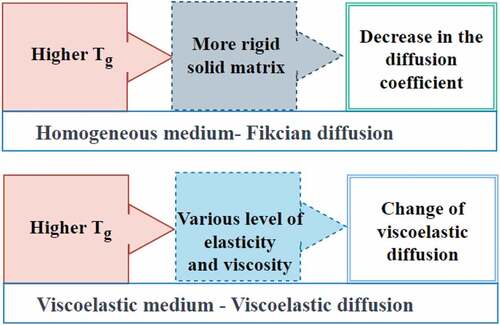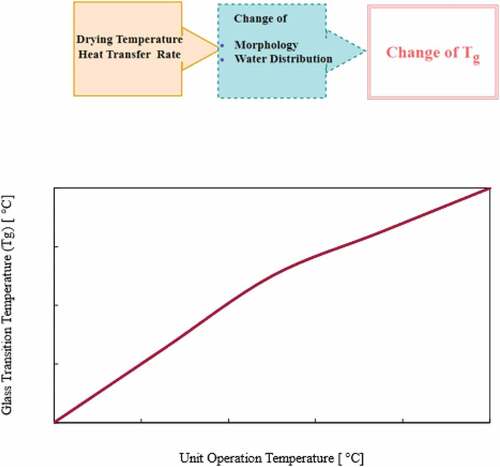Figures & data
Table 1. Comparisons among different measurement techniques of glass transition.
Figure 2. Effect of moisture content on glass transition temperature[Citation58].
![Figure 2. Effect of moisture content on glass transition temperature[Citation58].](/cms/asset/cd588b42-c0c3-46af-894a-f03d0cb91ca7/lfri_a_2204131_f0002_oc.jpg)
Table 2. Glass transition temperature of fundamental building blocks of plant cell wall.
Figure 3. Effect of plasticizer on the glass transition temperature[Citation71].
![Figure 3. Effect of plasticizer on the glass transition temperature[Citation71].](/cms/asset/96a4327f-3681-45fc-9071-30e07e344d72/lfri_a_2204131_f0003_b.gif)
Table 3. Effect of Molecular Weight on Tg[Citation25].
Figure 4. (A) Correlation between porosity and Tg in dehydrated plant-base sample,[Citation84] (b) contribution of porosity on the change of Tg.
![Figure 4. (A) Correlation between porosity and Tg in dehydrated plant-base sample,[Citation84] (b) contribution of porosity on the change of Tg.](/cms/asset/87febaa6-6b69-43d1-9d78-489d34dadac6/lfri_a_2204131_f0004_oc.jpg)
Figure 6. Different zone of diffusion, function of the temperature (K) and penetrant concentration (kg/m3).

Figure 7. Relation between browning (absorbance at 420 nm) reaction and T-Tg(K)[Citation14] .
![Figure 7. Relation between browning (absorbance at 420 nm) reaction and T-Tg(K)[Citation14] .](/cms/asset/e3248d99-bd86-4e92-b9af-85039c5b6654/lfri_a_2204131_f0007_oc.jpg)
Figure 8. Glass transition and crispness as a function of water content[Citation142].
![Figure 8. Glass transition and crispness as a function of water content[Citation142].](/cms/asset/ab8ca538-981b-47eb-915f-66a1951040d0/lfri_a_2204131_f0008_oc.jpg)


